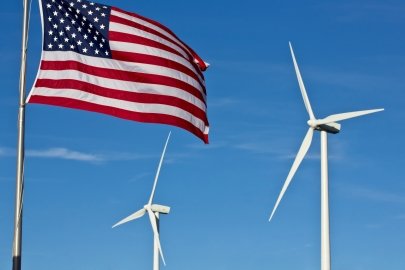As the United States rapidly scales up its renewable energy generating capabilities to reach the nation’s climate goals, we must consider how these systems interact with the natural environment.
The U.S. Department of Energy (DOE) plays a leading role in developing new technologies and procedures that reduce the environmental impacts of renewable energy.
DOE’s Office of Energy Efficiency and Renewable Energy (EERE) supports responsible clean energy development by funding research that protects wildlife from not only the impacts of climate change but also the clean energy infrastructure we need to address it.
How Does Clean Energy Help the Environment?
Overall, clean energy is considered better for the environment than traditional fossil-fuel–based resources, generally resulting in less air and water pollution than combustible fuels, such as coal, natural gas, and petroleum oil. Power generated by renewable sources, such as wind, water, and sunlight, does not produce harmful carbon dioxide emissions that lead to climate change, which causes drought, wildfires, flooding, poverty, health risks, species loss, and more.
Even though both renewable and nonrenewable energy sources require land for infrastructure, renewable energy systems often have a smaller footprint. For example, solar panels can be installed on existing structures, and wind turbines are well suited for agricultural land without displacing crops.
Did you know?
Collisions with land-based wind turbines kill fewer birds than other factors like automobiles, electrical lines, antenna towers, pesticides, and cats.
Clean Energy and Environmental Safety
Despite these benefits, clean energy technologies can have environmental consequences before, during, and after their useful lifespans. EERE supports a wide range of projects that help reduce impacts on our ecosystem.
From projects that use machine learning to automatically detect and identify bird interactions with solar facilities to others that use cameras with artificial intelligence to help site operators know what wildlife is nearby, EERE is invested in a future where clean energy benefits outweigh the costs.
That’s why DOE:
- Takes steps to ensure that clean energy projects address potential environmental concerns before projects begin. This includes considering the land at the project site, the safety of materials used, whether the materials are obtained sustainably, and the safety of fish and other wildlife.
- Focuses on ensuring that natural habitats and wildlife are safe from any harmful consequences. This means funding research into deterrent and mitigation technologies, like those that minimize bird and bat interactions with wind turbines and provide safe passage for fish through hydropower dams.
- Funds research to reduce environmental impacts after a project’s lifetime. This includes recycling, repurposing, and upcycling materials, such as batteries, wind turbine blades, and solar panels, that have reached the end of their useful lives.
Learn How EERE Works to Reduce Environmental Impacts of Clean Energy
Environmental Impacts News
The Weekly Jolt is a digest of the top clean energy news, tips, events, and information from DOE and EERE.
Sign-up to receive the latest information about EERE’s clean energy funding, prize, and competition opportunities.

